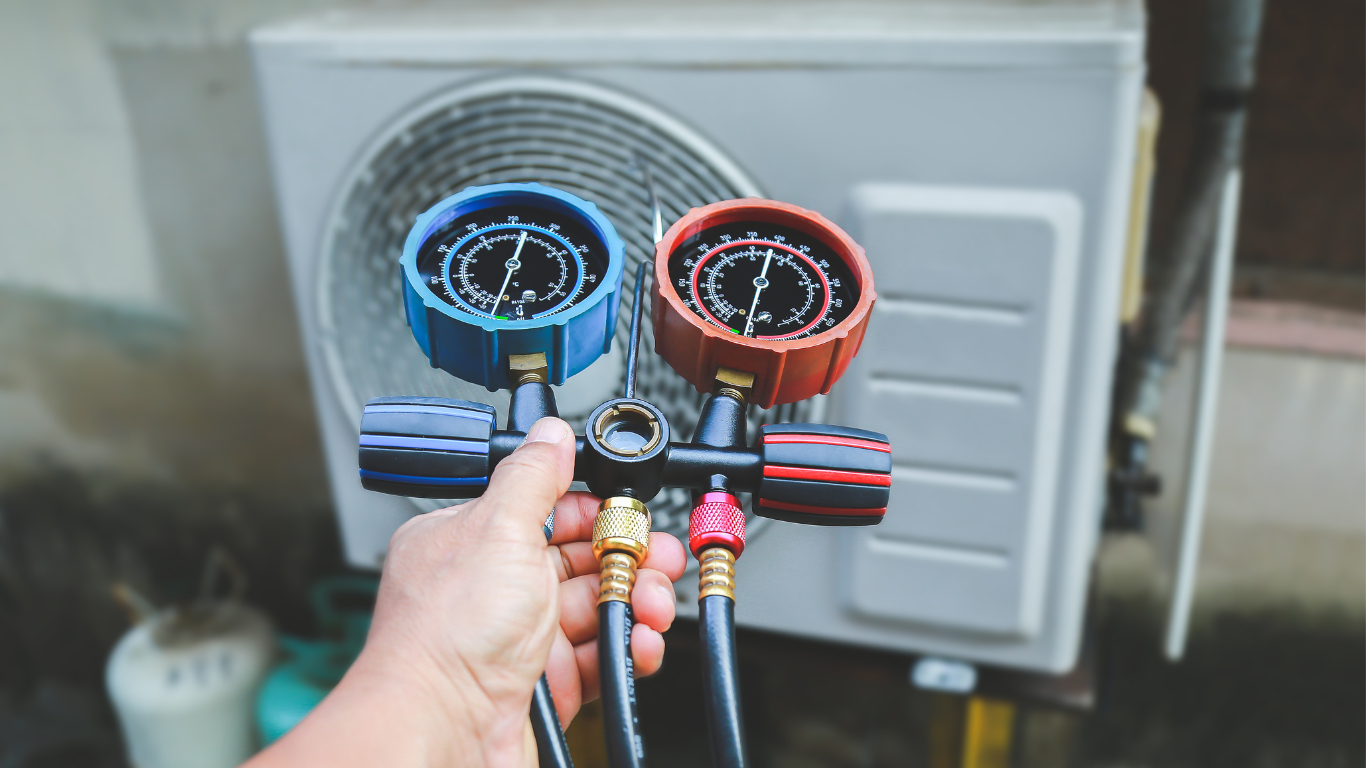Introduction
Commercial HVAC installation is a critical component in maintaining a comfortable, safe, and energy-efficient environment for businesses. Whether you’re setting up a new facility or upgrading an existing system, understanding the intricacies of commercial HVAC systems is essential. This guide covers everything you need to know about commercial HVAC installation, from system selection to installation process, maintenance, and the latest trends in the industry.
What is a Commercial HVAC System?
A Commercial HVAC (Heating, Ventilation, and Air Conditioning) system is designed to regulate the climate of large buildings, including offices, factories, hospitals, and retail stores. These systems differ significantly from residential HVAC systems in terms of size, complexity, and capacity. A commercial HVAC system is engineered to handle larger spaces and more extensive heating, cooling, and ventilation demands.
Types of Commercial HVAC Systems
Choosing the right type of HVAC system is crucial for optimal performance and energy efficiency. Here are the most common types of commercial HVAC systems:
1. Single-Split Systems:
- Ideal for smaller commercial buildings.
- Provides heating and cooling for individual rooms.
- Cost-effective but limited in scope for larger spaces.
2. Multi-Split Systems:
- Similar to single-split but can connect multiple indoor units to one outdoor unit.
- More energy-efficient due to inverter technology.
- Suitable for medium-sized buildings.
3. Variable Refrigerant Flow (VRF) Systems:
- Offers simultaneous heating and cooling in different zones.
- Highly efficient and customizable.
- Ideal for large commercial spaces.
4. Chiller Systems:
- Used for large buildings and industrial applications.
- Uses chilled water to provide cooling.
- Requires significant space and maintenance.
5. Rooftop Units (RTUs):
- Self-contained systems installed on the roof.
- Often used in retail and industrial buildings.
- Easy to maintain and install.
Key Factors to Consider Before Installation
Before installing a commercial HVAC system, several factors must be considered to ensure the system’s efficiency and longevity.
1. Building Size and Layout:
- The size of the building and its layout significantly impact the type and size of the HVAC system needed.
- Larger buildings may require multiple systems or zoned systems.
2. Climate:
- The local climate plays a crucial role in system selection. Areas with extreme temperatures may need more powerful systems.
3. Energy Efficiency:
- Energy-efficient systems reduce operating costs and are more environmentally friendly.
- Look for systems with high SEER (Seasonal Energy Efficiency Ratio) ratings.
4. Ventilation Requirements:
- Proper ventilation is essential for maintaining air quality and comfort.
- Consider systems that provide adequate ventilation without compromising efficiency.
5. Budget:
- Initial installation costs vary significantly depending on the system’s complexity and size.
- Consider both upfront costs and long-term savings when choosing a system.
The Installation Process
The installation of a commercial HVAC system is a complex process that involves several stages. Here’s a breakdown of the typical installation process:
1. Assessment and Planning:
- A thorough assessment of the building’s needs is the first step.
- HVAC professionals will evaluate the building’s size, layout, and existing infrastructure.
- A detailed plan is developed, including equipment selection, placement, and ductwork design.
2. System Design:
- The design phase involves creating detailed schematics for the HVAC system.
- Engineers design ductwork, ventilation, and control systems to ensure optimal performance.
3. Permitting and Compliance:
- HVAC installation often requires permits from local authorities.
- Ensure that the installation complies with local building codes and regulations.
4. Equipment Installation:
- Once the design is finalized, the equipment is installed.
- This includes placing outdoor units, installing ductwork, and setting up ventilation systems.
5. Electrical and Control Systems:
- The HVAC system must be connected to the building’s electrical system.
- Installing control systems, such as thermostats and building management systems, is also part of this phase.
6. Testing and Commissioning:
- After installation, the system is tested to ensure it operates correctly.
- Commissioning involves checking airflow, refrigerant levels, and system controls.
7. Training and Handover:
- The installation team provides training on operating and maintaining the HVAC system.
- A detailed manual and maintenance schedule are handed over to the building’s management.
Maintenance and Upkeep
Regular maintenance is essential for the longevity and efficiency of a commercial HVAC system. Here are some key maintenance practices:
1. Routine Inspections:
- Regular inspections help identify potential issues before they become major problems.
- Inspect filters, ductwork, electrical connections, and refrigerant levels.
2. Filter Replacement:
- Air filters should be replaced regularly to ensure proper airflow and indoor air quality.
- Dirty filters reduce system efficiency and can lead to breakdowns.
3. Cleaning Coils and Ducts:
- Coils and ducts accumulate dust and debris over time, reducing efficiency.
- Regular cleaning helps maintain optimal system performance.
4. Refrigerant Levels:
- Low refrigerant levels can cause the system to work harder, increasing energy consumption.
- Check and maintain proper refrigerant levels to avoid costly repairs.
5. System Upgrades:
- As technology advances, consider upgrading components for better efficiency.
- Retrofitting older systems with newer technology can lead to significant energy savings.
Energy Efficiency and Sustainability
Energy efficiency is a top priority for many businesses when selecting and maintaining a commercial HVAC system. Here are some strategies to improve efficiency:
1. High-Efficiency Equipment:
- Choose HVAC systems with high SEER ratings.
- Invest in energy-efficient components like variable-speed fans and high-efficiency compressors.
2. Smart Thermostats and Controls:
- Smart thermostats allow precise control of the HVAC system, reducing energy waste.
- Building management systems can automate temperature control based on occupancy.
3. Regular Maintenance:
- Well-maintained systems operate more efficiently.
- Regular maintenance reduces energy consumption and extends the system’s lifespan.
4. Zoning Systems:
- Zoning allows for independent temperature control in different areas of the building.
- Reduces energy use by only heating or cooling occupied spaces.
5. Energy Recovery Ventilation (ERV):
- ERV systems capture and reuse energy from exhaust air to precondition incoming fresh air.
- Improves overall system efficiency and indoor air quality.
Common Challenges in Commercial HVAC Installation
Commercial HVAC installation can present several challenges. Here are some common issues and how to address them:
1. Space Constraints:
- Limited space can make installation difficult, especially in older buildings.
- Solutions include rooftop installations or compact systems designed for tight spaces.
2. Noise Levels:
- HVAC systems can generate significant noise, disrupting business operations.
- Sound-dampening materials and quieter equipment can mitigate this issue.
3. System Integration:
- Integrating a new HVAC system with existing building systems can be challenging.
- Work with experienced professionals who can ensure seamless integration.
4. Budget Overruns:
- Unexpected costs can arise during installation.
- A detailed plan and contingency budget can help manage these costs.
5. Compliance with Regulations:
- Failing to comply with local regulations can lead to delays and fines.
- Ensure all work is done according to the latest building codes and standards.
The Future of Commercial HVAC Systems
The HVAC industry is constantly evolving, with new technologies and trends shaping the future of commercial HVAC systems. Here are some of the latest trends:
1. Smart HVAC Systems:
- Integration of IoT (Internet of Things) allows for real-time monitoring and control.
- Predictive maintenance uses data analytics to predict and prevent system failures.
2. Green HVAC Technologies:
- Increased focus on sustainability and reducing carbon footprints.
- Renewable energy sources like solar power are being integrated into HVAC systems.
3. Advanced Air Filtration:
- Growing concern for indoor air quality has led to the development of advanced filtration systems.
- HEPA filters and UV-C light technology are becoming more common.
4. Energy Storage Solutions:
- New energy storage technologies allow businesses to store energy during off-peak hours.
- Reduces reliance on the grid during peak hours and lowers energy costs.
5. Decentralized HVAC Systems:
- Decentralized systems allow for more localized control and reduce energy waste.
- Ideal for buildings with varying occupancy levels.
Conclusion
Commercial HVAC installation is a complex but essential process for businesses looking to maintain a comfortable and efficient environment. From selecting the right system to ensuring proper installation and maintenance, each step is crucial to achieving optimal performance and energy savings. As the industry continues to evolve, staying informed about the latest technologies and trends can help businesses make better decisions and future-proof their HVAC systems. By understanding the ins and outs of commercial HVAC installation, businesses can ensure they provide a comfortable, safe, and sustainable environment for their employees and customers.
FAQs
What is a commercial HVAC system?
A commercial HVAC system is designed to regulate the climate of large buildings, such as offices, factories, hospitals, and retail stores, offering heating, cooling, and ventilation.
How do I choose the right HVAC system for my business?
Consider factors like the size and layout of your building, local climate, energy efficiency, ventilation needs, and your budget when selecting an HVAC system.
What are the types of commercial HVAC systems?
Common types include Single-Split Systems, Multi-Split Systems, Variable Refrigerant Flow (VRF) Systems, Chiller Systems, and Rooftop Units (RTUs).
What is the typical process for installing a commercial HVAC system?
The process includes assessment and planning, system design, permitting and compliance, equipment installation, setting up electrical and control systems, testing, commissioning, and training.
Why is regular maintenance important for commercial HVAC systems?
Regular maintenance ensures optimal performance, extends the system’s lifespan, and helps prevent costly repairs and energy inefficiencies.
How can I improve the energy efficiency of my commercial HVAC system?
Improve efficiency by choosing high-SEER equipment, using smart thermostats, maintaining the system regularly, implementing zoning systems, and considering energy recovery ventilation.
What are some common challenges in commercial HVAC installation?
Challenges include space constraints, noise levels, system integration with existing structures, budget overruns, and ensuring compliance with regulations.
What are the latest trends in commercial HVAC systems?
Trends include smart HVAC systems with IoT integration, green HVAC technologies, advanced air filtration, energy storage solutions, and decentralized HVAC systems.



